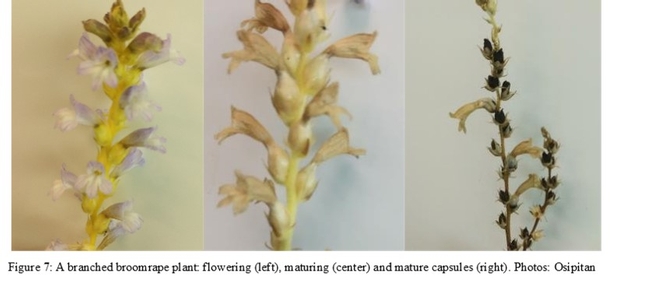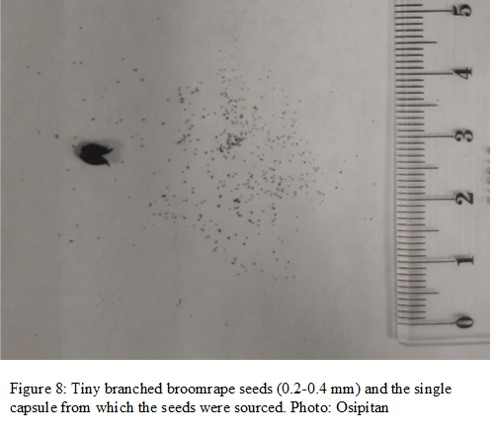Article also published in California Weed Science Society Journal (March 2021 issue)
-Brad
In a previous article we gave a general background of branched broomrape (Phelipanche ramosa), a parasitic weed which was the focus of a $1.5 million eradication effort four decades ago in California, and now a re-emerging threat to California processing tomato (link, Figure 1). The threat posed by branched broomrape is different than most agricultural weeds due to its unique life cycle. Understanding its biology is an imporant first step in providing strategic and sustainable control of this weedy broomrape in California crop production systems.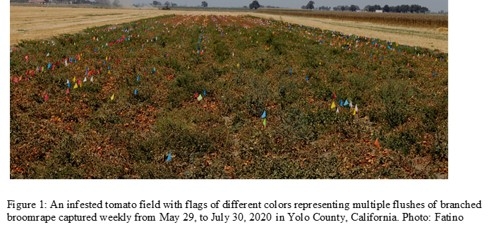
Branched broomrape is an obligate parasite, meaning that all stages of its life cycle, right from germination to seed production depend entirely on the presence of a suitable host plant and a relatively narrow range of environmental conditions. 
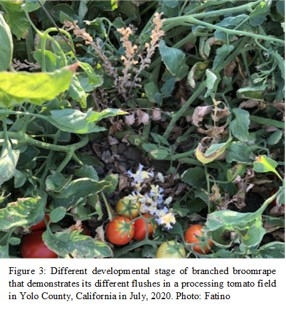
After germination, the radicle (immature primary root) of the broomrape seedling grows a few millimeters in length to encounter a host root. If it does not encounter and attach to a suitable host, it is likely to exhaust its energy reserves within a few days. Interestingly, not all plants that release stimulants for branched broomrape germination allow the penetration and connection of this parasite to their system. These plants are called false hosts or trap crops and these may include alfalfa (Medicago sativa),cowpea (Vigna unguiculata), green pea (Pisum sativum) and flax (Linum usitatissimum). These trap crops can be used to promote germination of branched broomrape without supporting their survival; thereby, reducing populations of the weed in the soil seedbank.
Following a successful attachment to a host plant such as tomato, the radicle develops into a specialized modified root called haustorium, a plant organ common to all parasitic plants. 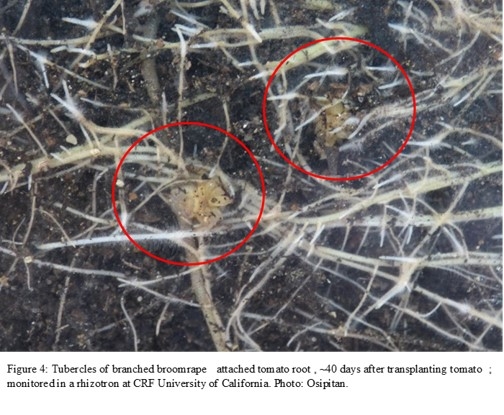
Once it emerged above soil surface, branched broomrape rapidly proceeds to the reproductive stage; flowering within 3 to 7 days after 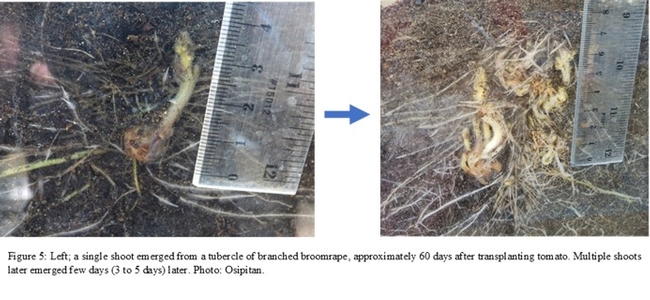
Effective control of broomrapes is difficult, largely due to its unique biology and complex life cycle. As indicated above, most of the broomrape life cycle occurs below the soil surface, which makes it difficult to detect and control before it causes damage to the host plant. The short time period between emergence and seed dispersal also makes detection and control difficult, while the absence of chlorophyll and photosynthesis limits potential herbicide target sites and complicates chemical management of the weed. The hard-to-detect, abundant, tiny seeds and ability of the seeds to remain viable for decades, promotes the spread and persistence of branched broomrape in crop production systems. Thus, effective management of broomrape requires a long-term integrated approach that involves sound understanding of its localized and general biology. Herbicide programs for management of a related species, Egyptian broomrape have been developed in other countries based on understanding of the parasitic weeds lifecycle. University and industry research is ongoing in California to develop similarly-effective practices for the California processing tomato industry (link).
